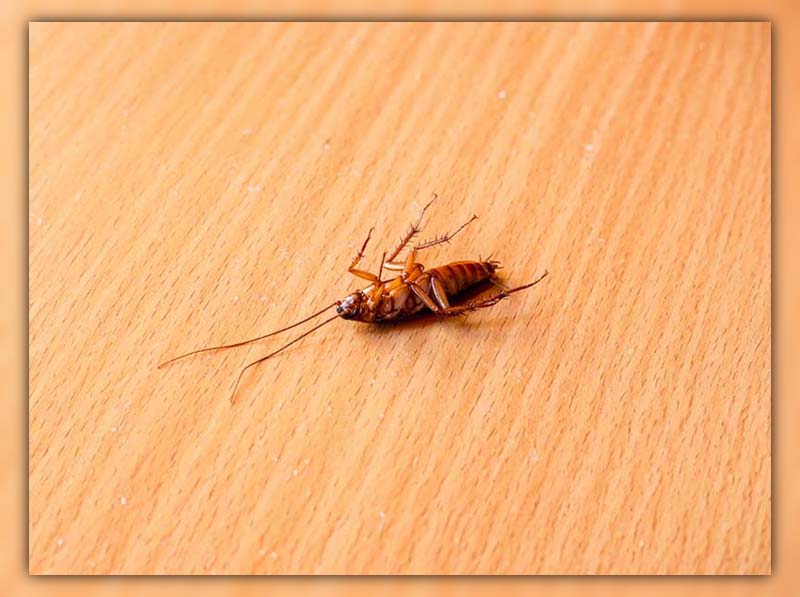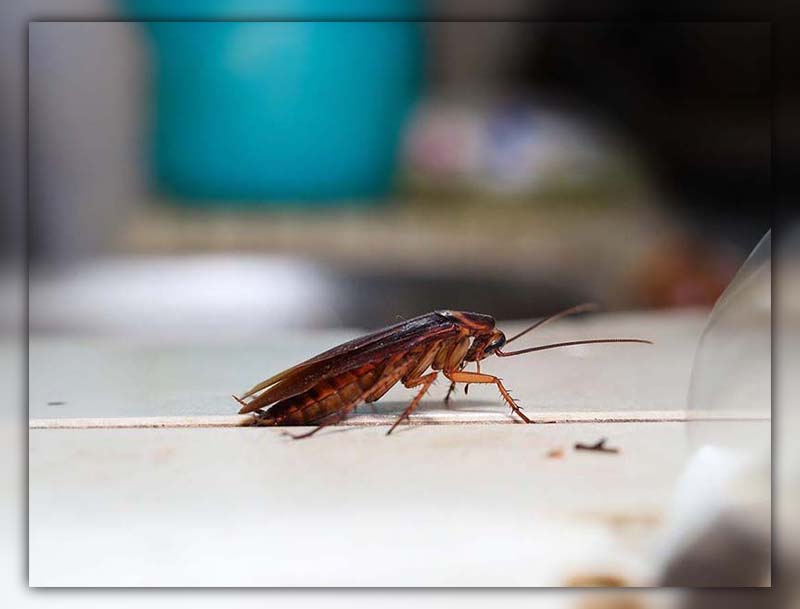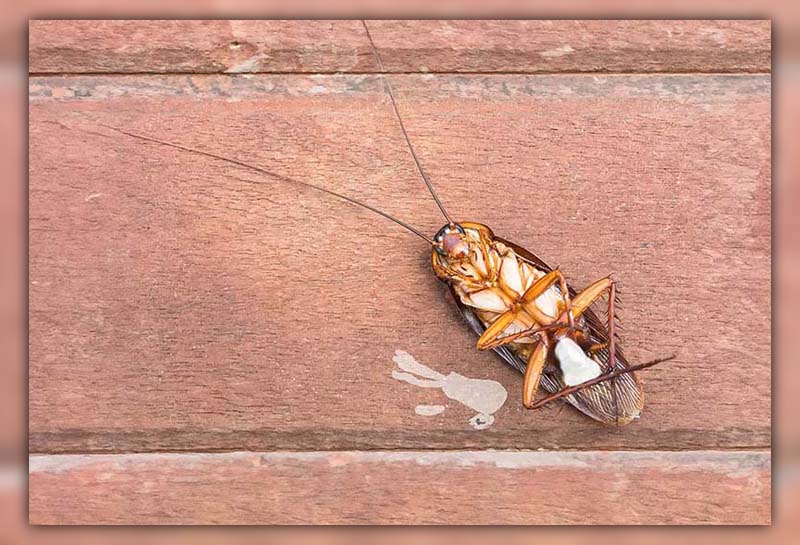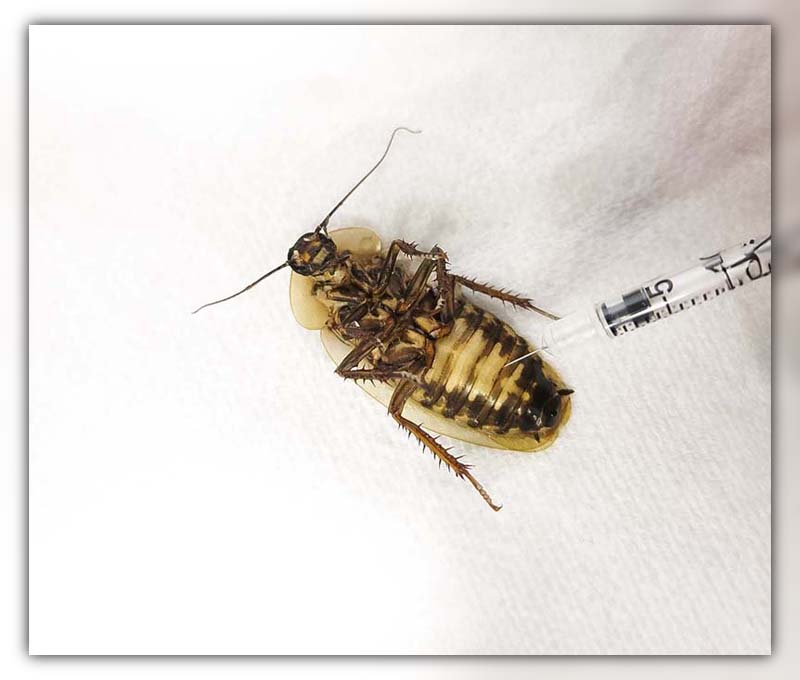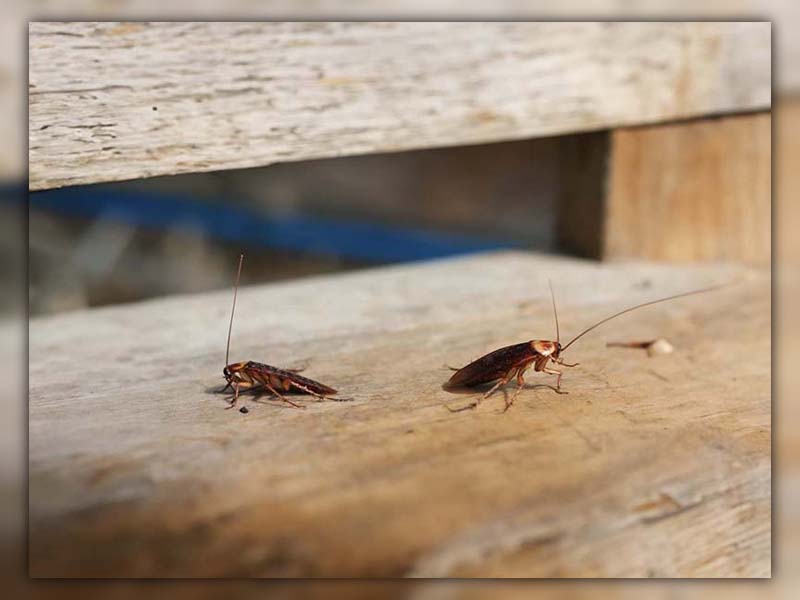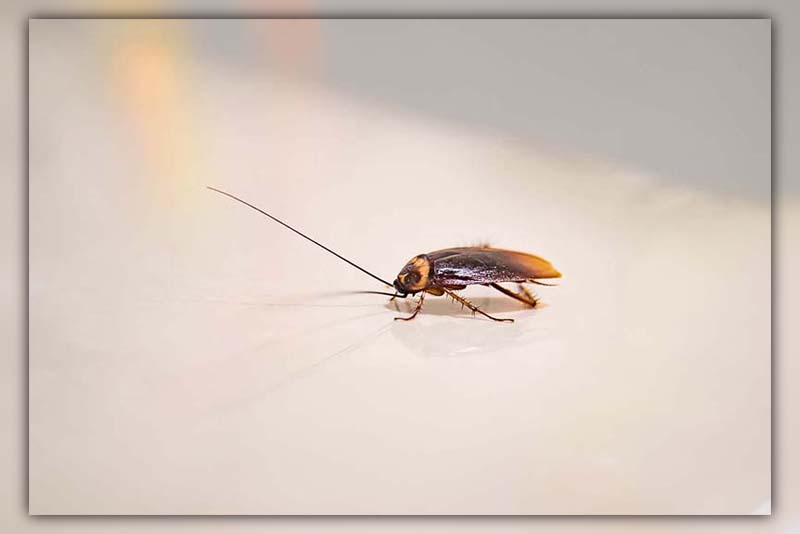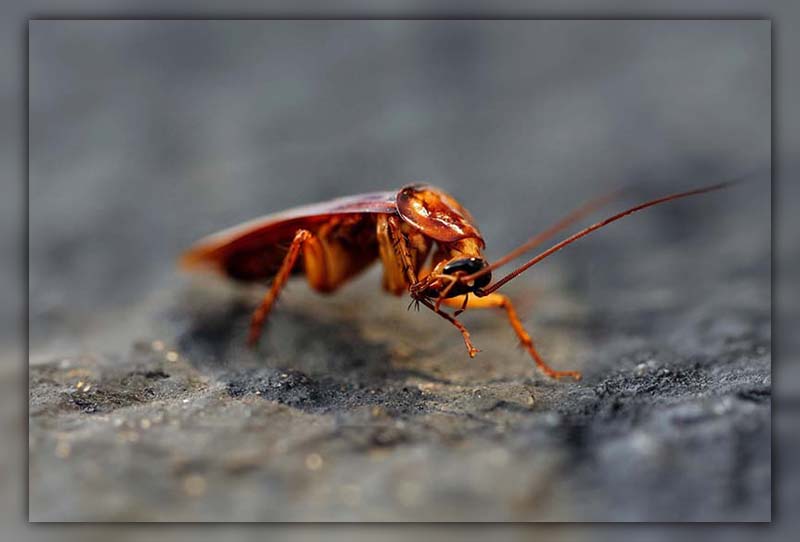The mysteries of the natural world are vast, with one puzzling question being the hue of cockroach blood. “What color is cockroach blood?” you might wonder.
This exploration will unveil truths about cockroaches that go far beyond their reputation as pesky intruders.
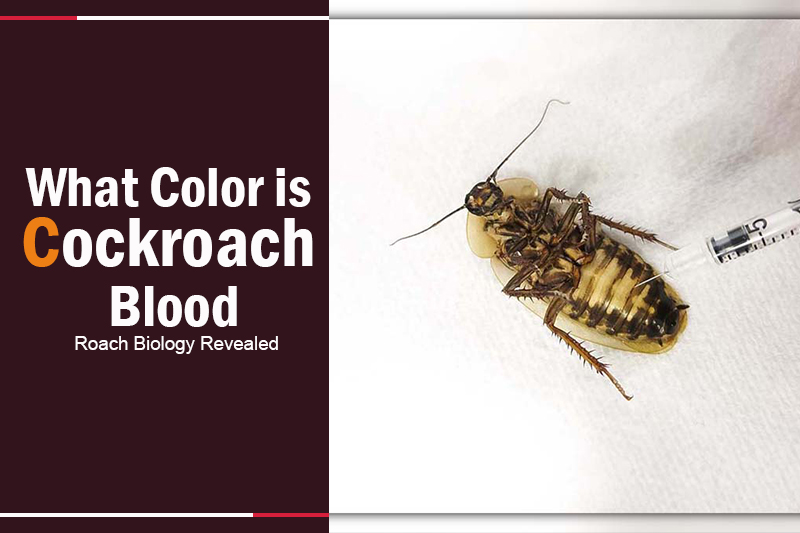
What color is cockroach blood?
Cockroach blood, known as hemolymph, is typically colorless. While you might occasionally find some with a slight yellow or orange tint, this is not common. The absence of hemoglobin, the molecule that gives our blood its red hue, is the primary reason their blood lacks color.
The gender of a cockroach can influence its blood color. While both genders have clear hemolymph, female cockroaches producing eggs undergo hormonal changes, leading to the creation of a protein called vitellogenin.
This protein, which has a yellowish-orange shade, can tint the cockroach’s hemolymph yellow or orange. Once the female has finished laying her eggs, her blood will return to its usual colorless state. There have been urban legends about tropicana cockroach blood, but it’s essential to rely on scientific facts.
>> Read more: Cockroach repellent essential oils: A Critter-Free Home!
Do Cockroaches have red blood?
No, cockroaches don’t have red blood. If you ever crush one, the liquid you see might be clear, white, yellow, or even orange, but never red.
The color of blood in various organisms largely depends on its molecular components. Humans and many vertebrates have red blood due to a molecule called hemoglobin. As stated by the American Chemical Society, hemoglobin is an iron-containing molecule that turns bright red when it binds with oxygen. This molecule is essential for transporting oxygen throughout the body in these creatures.
However, cockroaches and many insects lack hemoglobin in their blood, known as hemolymph. This is primarily because they have an entirely different respiratory system. Instead of using blood to carry oxygen, cockroaches have tracheal tubes, a network of tiny tubes that directly deliver air to their cells. Hence, their hemolymph remains colorless or takes on other hues, but never red.
What’s the reason for cockroaches having white blood?
Cockroach blood is whitish primarily due to its molecular makeup, which includes salts, ions, organic compounds, proteins, and various minerals. These components give it a clear to white hue, hence roach blood color tends to be pale.
The absence of hemoglobin in cockroaches is a significant factor. Unlike humans, cockroaches don’t rely on hemoglobin to transport oxygen. Instead, they breathe using tracheal tubes. Additionally, they don’t have distinct red and white blood cells as we do.
It’s noteworthy that the color of their blood can shift to yellow or orange in adult females during egg production. This change is attributed to increased protein and vitamin concentrations in the blood of egg-laying females.
>> Read more: What is a White Roach? Decoding the Pale Pest Mystery.
What is inside the blood of cockroaches?
Cockroach blood, or hemolymph, is more than just a simple fluid. As stated by Science Direct, it is a rich mixture of:
- Water: making up 20-50% of the blood, depending on the cockroach’s size.
- Inorganic salts and ions: essential for various physiological processes.
- Organic compounds: including high concentrations of proteins, amino acids, lipids, carbohydrates, and glycerol.
But here’s what’s fascinating: unlike human blood, cockroach blood doesn’t transport oxygen. They don’t have hemoglobin – the molecule we rely on for oxygen transport. Instead, cockroaches have a different system, using tracheal tubes for breathing.
Functions of cockroach hemolymph include:
- Transporting nutrients to different parts of the body.
- Storing water, which aids in hydration.
- Removing waste products, ensuring the roach’s system remains clean.
- Boosting immunity: The hemolymph has cells called hemocytes. These cells are crucial for the cockroach’s immune response, helping in tissue repair, new cell production, and defense against pathogens.
Do all roaches possess blood?
Yes, all cockroaches possess blood, known as hemolymph.
It plays a crucial role in transporting essential materials, delivering vital nutrients, and eliminating toxins throughout their bodies.
Without hemolymph, a cockroach’s tissues and cells would be unable to function properly, making it vital for their survival.
Do young roaches have blood?
Absolutely, young roaches, often referred to as nymphs, have blood, or more accurately, hemolymph – just as their adult counterparts do. Interestingly, these cockroach nymphs possess a higher proportion of hemolymph in relation to their body volume compared to adults, which is vital for their growth and maturation.
Hemolymph serves multiple functions.
It acts as a reservoir for water and essential minerals. Given that baby roaches necessitate a substantial amount of water during their initial days for survival, this is crucial.
Additionally, if a nymph undergoes desiccation, or drying out, its body tissues can draw water from the hemolymph to replenish lost moisture.
Furthermore, hemolymph is packed with hemocytes, cells that bolster the nymph’s immune response. These hemocytes not only safeguard the young roach from harmful pathogens but also play a role in promoting cell growth.
Can cockroaches bleed?
Cockroaches, interestingly, don’t bleed in the way we might think.
While they have a fluid analogous to blood, they won’t gush it when injured or even decapitated.
This is due to their open circulatory system, different from our closed system with veins and arteries.
Rather than having blood flow through veins, their fluid, called hemolymph, freely circulates around their organs and tissues. Consequently, there isn’t much pressure in their system to cause bleeding when injured.
Moreover, their hemolymph contains special cells, known as hemocytes, which help in clotting after injuries. That’s why you won’t witness a bleeding cockroach, and fascinatingly, they won’t die from blood loss even if they lose their head!
>> Read more: How long can a Cockroach live: Exploring Cockroach Lifespan.
Conclusion
We’ve unraveled the mystery behind the question, “What color is cockroach blood?”.
From the typical colorless hemolymph to their unique respiratory system, cockroaches are more than meets the eye.
Their intricate biology proves the endless wonders of the natural world. Share your own cockroach encounters and keep exploring with more insights from Pestweek.

Calina Mabel has over 15 years of experience in the field of journalism and communications. Currently, Calina Mabel is the Content Writer for categories such as Cockroach, Ants, Bed Bugs, Mosquito, Rodent, Termite, and Flies on Pestweek.com. She aims to build content for these categories with a focus on providing valuable and accessible information to readers, in order to create the world’s largest knowledge community about Pests.
All content written by Calina Mabel has been reviewed by Emily Carter.


